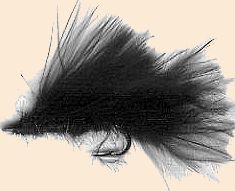
|
|||
|
October 31st, 2005 |
The Premiere OnLine Magazine for the Fly Fishing Enthusiast.
This is where our readers tell their stories . . .
Leech Patterns in Small Streams
By Jason Cotta
|
Marabou Leech The Marabou Leech is by far one of the most effective leech patterns I have ever used while fishing small streams. The marabou allows the fly to breath and looks incredibly realistic which makes it irresistible to trout. Because it's such a great pattern I've included the recipe and tying instructions for those of you not already familiar with it.
Thread: Black 6/0 Tail: Black Marabou Body: Black Dubbing Wings: Black Marabou
Tying Steps2) Strip a sizeable amount of marabou from a feather. Measure it the length of the hook shank and tie it in at the end of the hook. 3) Clip any excess butts and dub black fur up to mid-shank. 4) Take a strip of marabou equal to that of the tail and tie it in mid-shank. 5) Dub until you reach a little before the eye and tie in another clump of marabou the same size as before. Refer to the picture if you are unsure of proportions. 6) Dub the head of the fly, whip finish, and use head cement as desired.
Tying NotesAbout the AuthorAlthough Jason has been an angler all his life it was just four years ago he taught himself to fly fish. Ever since catching that first fish on a fly rod Jason has been hooked and spends much of his time in pursuit of Arizona's many angling opportunities. Jason just started college this fall and has landed himself a job working in the fishing department of a major outdoor store. Being a dedicated outdoorsman in the age of computer games and television, Jason is a prime example that there are still young people out there who love to fish. ~ Jason
|